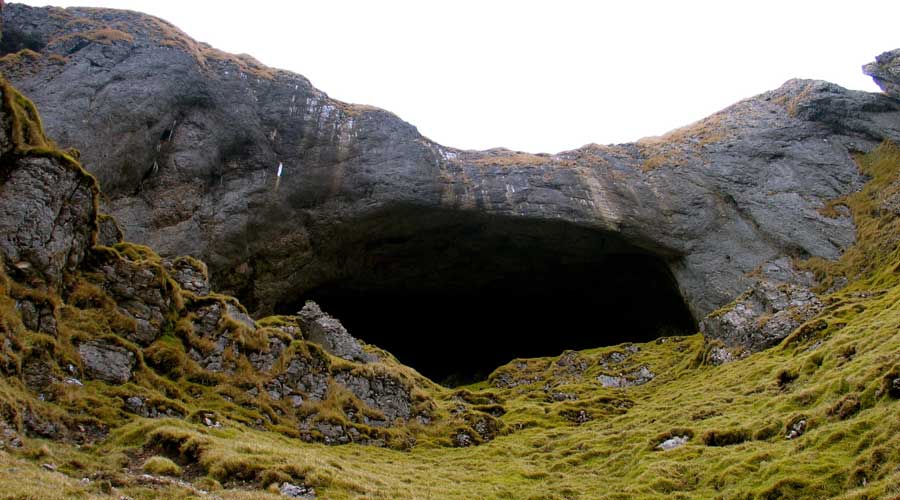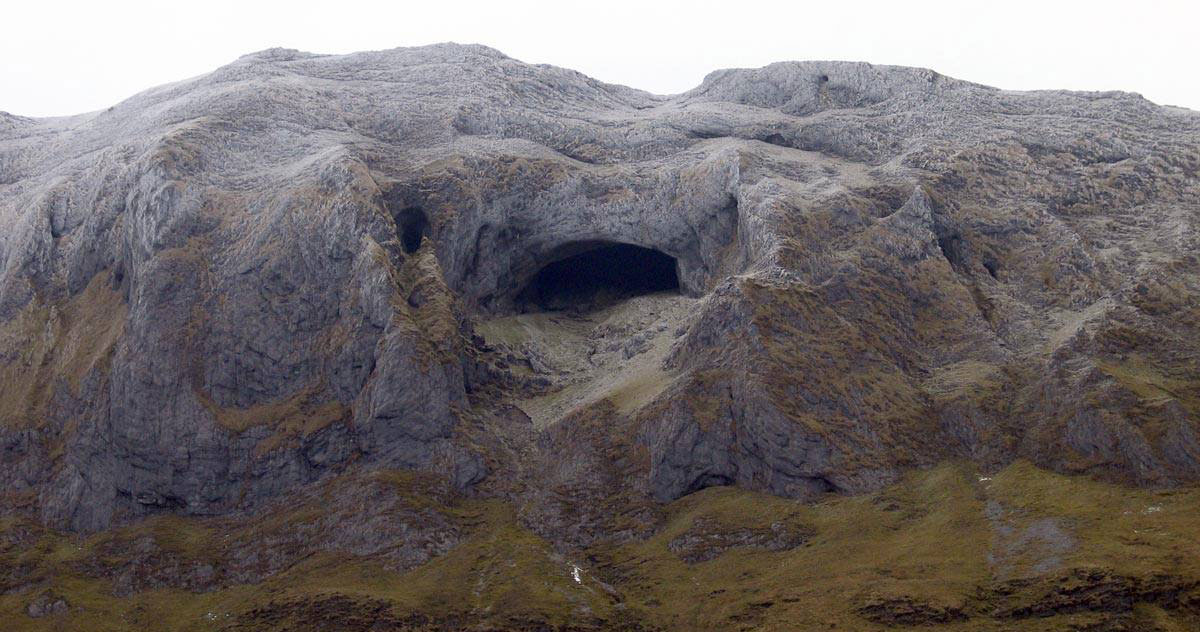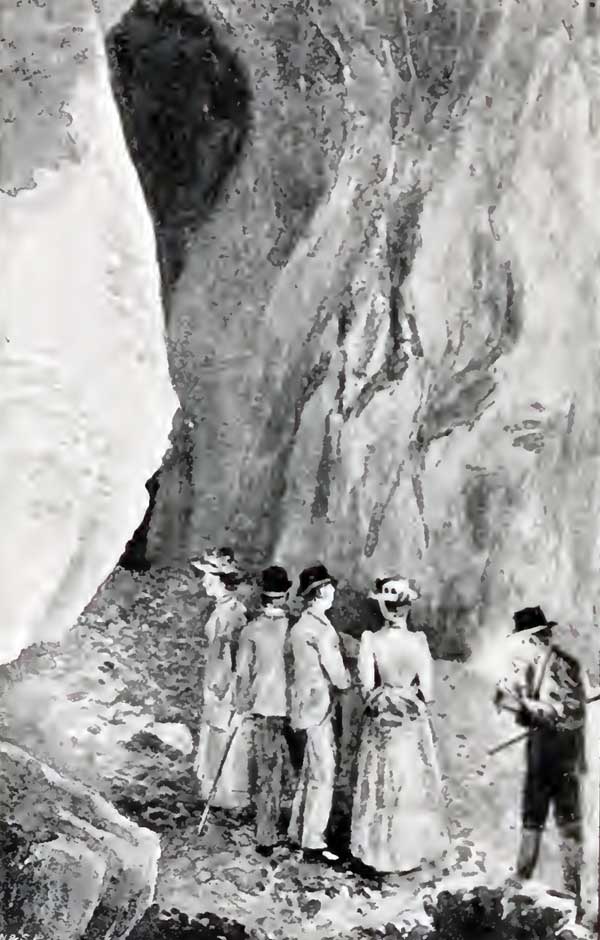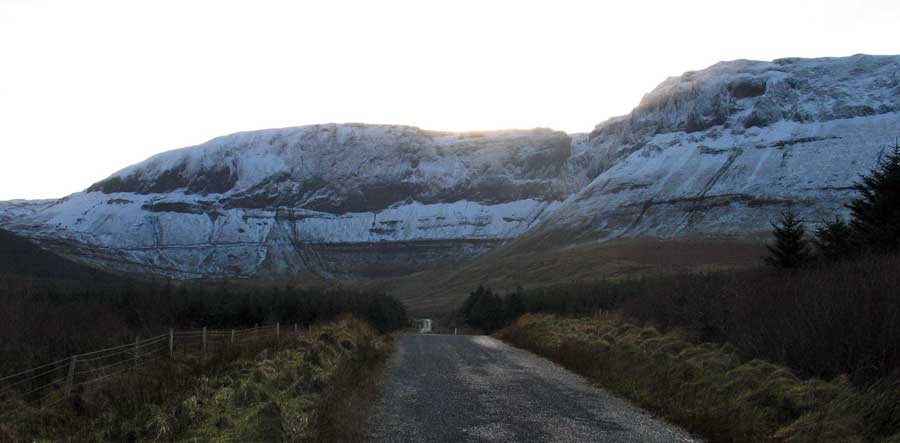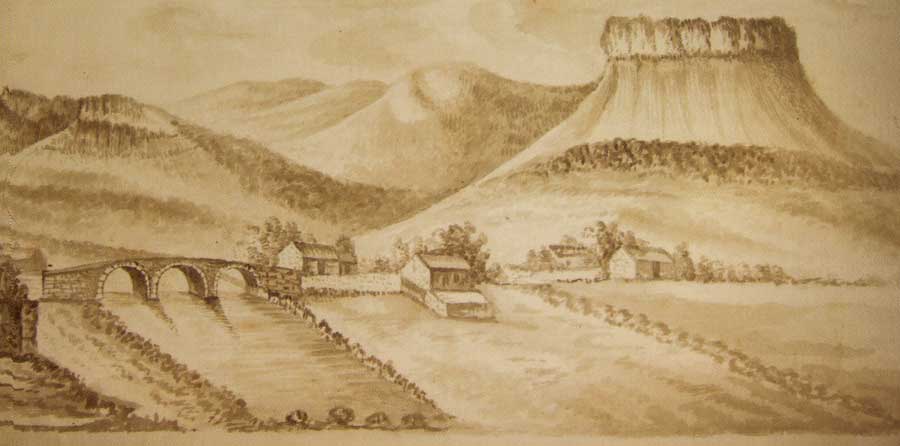Diarmuid and Grainne's Cave
Diarmuid and Grainne's cave is located above the cliffs of Annacuna at the back of the Gleniff Horseshoe, the spectacular glacial valley behind Benwisken. This is one of the highest caves in Ireland, with one of the widest mouths, and has fabulous views out across the valley to the northwest. The cave and the surrounding land is privately owned. Access to the cave is difficult, and the landowners prefer people to look at the cave from below. Always seek the owners and ask for permission before climbing to the cave.
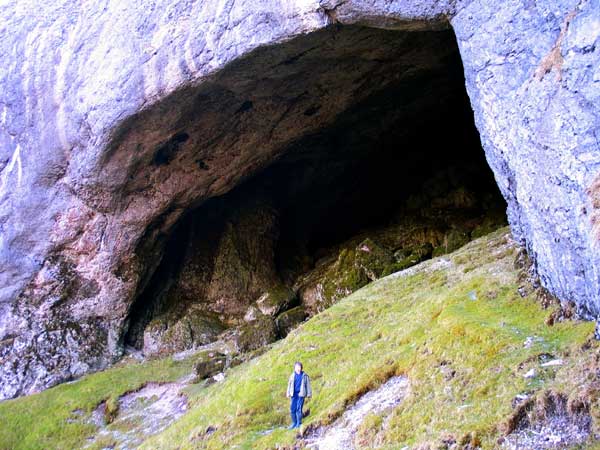
I visited the cave for the first time in January 2011. The cave is a steep climb, straight up for about 400 meters from the old national school. We scrambled up the steep mountain side following sheep trails, and found the going quite difficult. The last part, just before you get to the cave has flimsy ropes attached. We also found it dangerous for the people following after us, as any little stone or rock that gets disloged goes whizzing down the hill, gathering momentum as they go.
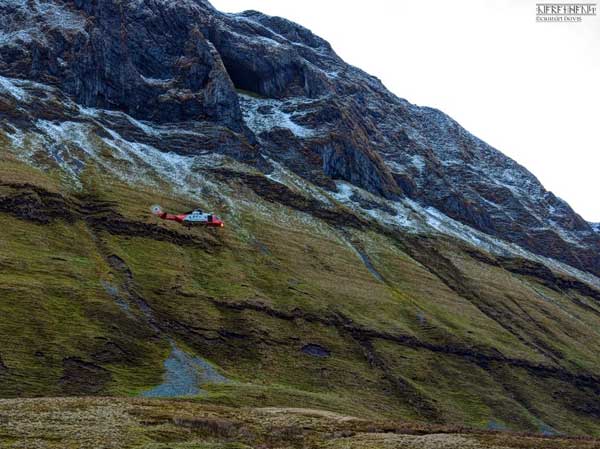
The cave itself is a massive cavern where water worked its way out through the softer limestone during the last iceage, when the glaciers were more that a kilometer thick over the mountains. The retreating glacier gouged out the massive valley and formed the spectacular cliffs and the unique peak of Benwisken. There are several interconnected gallerys in the cave: the opening known as the 'Keyhole' is shown to the left.
There was some evidence of ancient activity in the cave:
The celebrated cavern of Gleniff, in the Co. Sligo, situated high up on the mountain-side, was certainly inhabited in former times. Some rude flint-flakes, and a bronze hatchet now in the collection to the Royal Irish Academy were here found in a mass of stalagmite, and under the present floor of the cavern bones of recent animals were dug up by the late E. T. Hardman.
Pagan Ireland - W. G. Wood-Martin, 1895.
However, like all other caves, it was surely visited during the mesolithic by the roaming tribes of hunter gatherers and was most likely held to be a very sacred place. County Sligo's megalithic complexes are built in areas with caves: Carrowkeel, Kesh Corran and Knocknarea have about 40 caves between them. Megalithic chambers are really artificial caves.
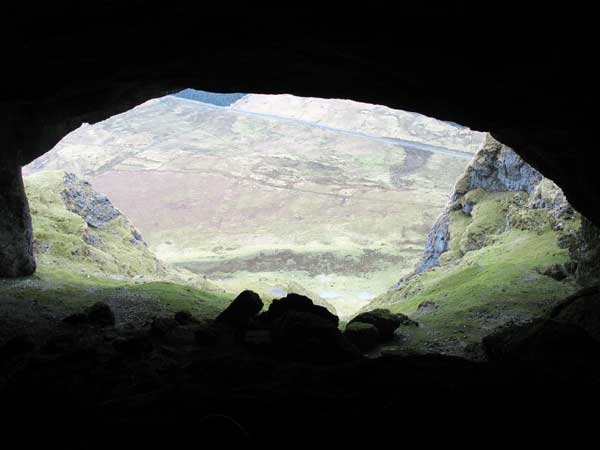
It is possible that court cairns such as Creeveykeel nearby are actually a replica of the Gleniff valley with the chamber at the back of the court representing the sacred cave. That the cave is dedicated to Grainne, a sun goddess makes sense, as the cave opens to the northeast, the direction of the midsummer sunrise.

